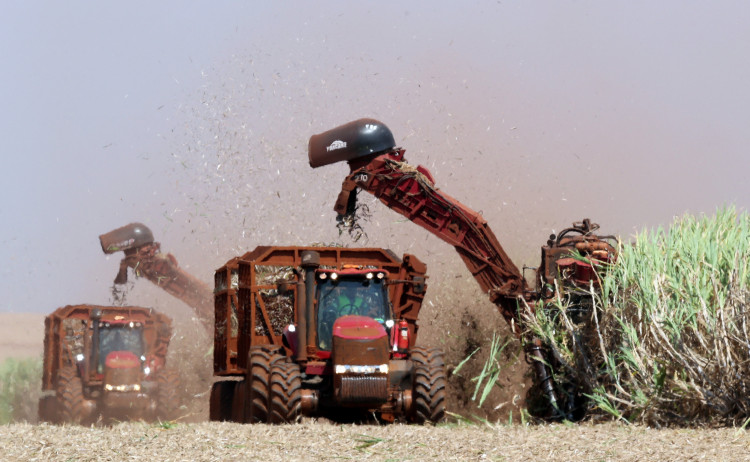The Amazon region of Brazil, in the midst of its spring season, is grappling with an unprecedented drought. This not only affects the daily lives of local residents but has also impacted the grain exports of this South American powerhouse.
According to data from the port website of Manaus, the capital of the Amazon state, water levels had dropped to a historic low of 13.29 meters by October 19, the lowest since records began in 1902. Data from Brazil's disaster alert center, Cemaden, indicates that rainfall from July to September in parts of the Amazon was the lowest since 1980. Manaus experienced rain on only one day in August.
The reduced water levels have hindered cargo ship movement, disrupting grain exports and cutting off local supplies of drinking water, food, and fuel. Over the past few weeks, NGOs have delivered humanitarian aid to affected communities. The Amazon state's civil defense agency estimates that the drought has impacted at least 400,000 people.
On the 19th, shipping service provider Serveporto informed its clients that some grain transport on northern rivers had halted due to the drought-induced low water levels. Some barge companies have ceased operations on the Tapajos and Madeira rivers, impacting grain exports and delivering a "heavy blow" to Amazon ports. Some container companies had already suspended direct services to the region.
Manaus, located at the confluence of the Negro and Amazon rivers, is the region's most populous city and a trade hub with its free trade zone. Its port is the world's largest floating port.
Traditionally, Brazil's soybean and corn exports relied on southern and southeastern ports, with goods transported long distances by truck. However, over the past decade, Brazil has developed northern export routes in the Amazon region, using the Amazon river to transport grains to major ports like Manaus, enhancing its competitive edge in grain exports.
Data from the National Association of Grain Exporters and the Brazilian Confederation of Agriculture and Livestock shows that from 2011 to 2020, corn and soybean exports through northern and northeastern ports increased by 410%, from 8.3 million tons to 42.3 million tons. The share of exports from northern ports in the country's total exports rose from 14% to 32%.
The extreme drought in the Amazon region implies increased costs for the northern route, with corn exports at higher risk. Earlier this month, Brazil's Ministry of Agriculture expressed concerns about corn exports given the upcoming shipments of the second corn crop.
Thiago Pera, coordinator of EsalqLog logistics research, noted that compared to soybeans, the export of the largely harvested second corn crop would be more challenging. He also highlighted that the low water levels in the Amazon rivers have affected the docking of ocean-going vessels around Manaus, increasing pilotage costs.
China has long been Brazil's primary soybean buyer, with limited corn imports. However, since an import agreement was signed between China and Brazil late last year, Brazil has surpassed the U.S. and Ukraine to become China's main source of corn imports.
According to data analyzed by Fastmarkets Agriculture, in August of this year, Brazil exported 9.3 million tons of corn and 8.4 million tons of soybeans, with China as the primary buyer.
On October 18, the Brazilian government acknowledged a "reduction in operational capacity" at the Itacoatiara grain terminal and two large container terminals near Manaus. The government also announced an allocation of 100 million reais (about $19.88 million) for emergency dredging services.
The Brazilian Ministry of Transportation, Ports, and Airports will jointly dredge the Madeira and Solimões rivers, both crucial for goods, product, and personnel transportation in the Amazon region. The dredging project is set to begin this week and is expected to last 45 days.
While parts of the Amazon rivers experience reduced water levels during the dry season every year, the El Niño phenomenon, linked to climate change, has exacerbated the drought. Earlier this month, Brazil's science department indicated that the El Niño phenomenon is intensifying the country's drought, which is expected to last at least until December.
This round of El Niño began in June. The U.S. National Oceanic and Atmospheric Administration recently stated that its intensity is "very likely" to reach historic highs.
Other countries on the American continent are also facing water shortages. 75% of Mexico is in a state of drought, with the government issuing water restrictions. Mexico is responding by drilling new wells, constructing new water treatment plants, and building rainwater collection systems.






